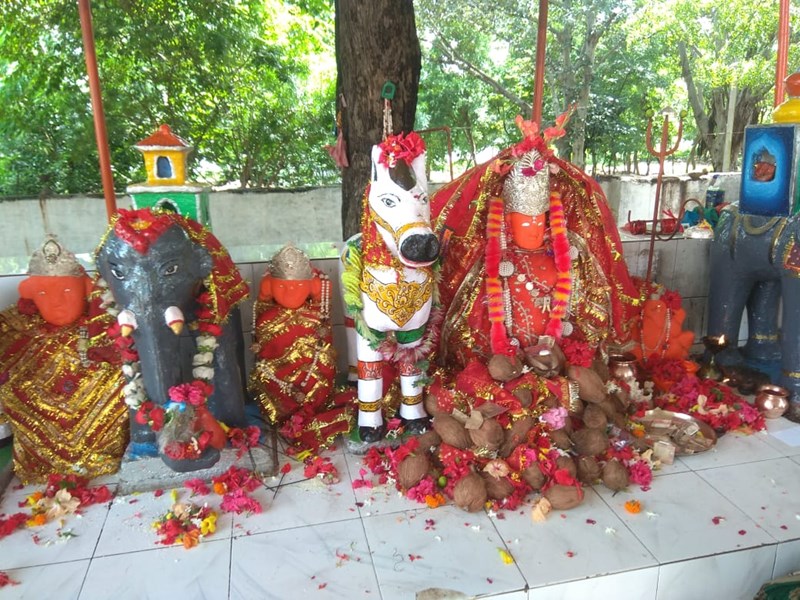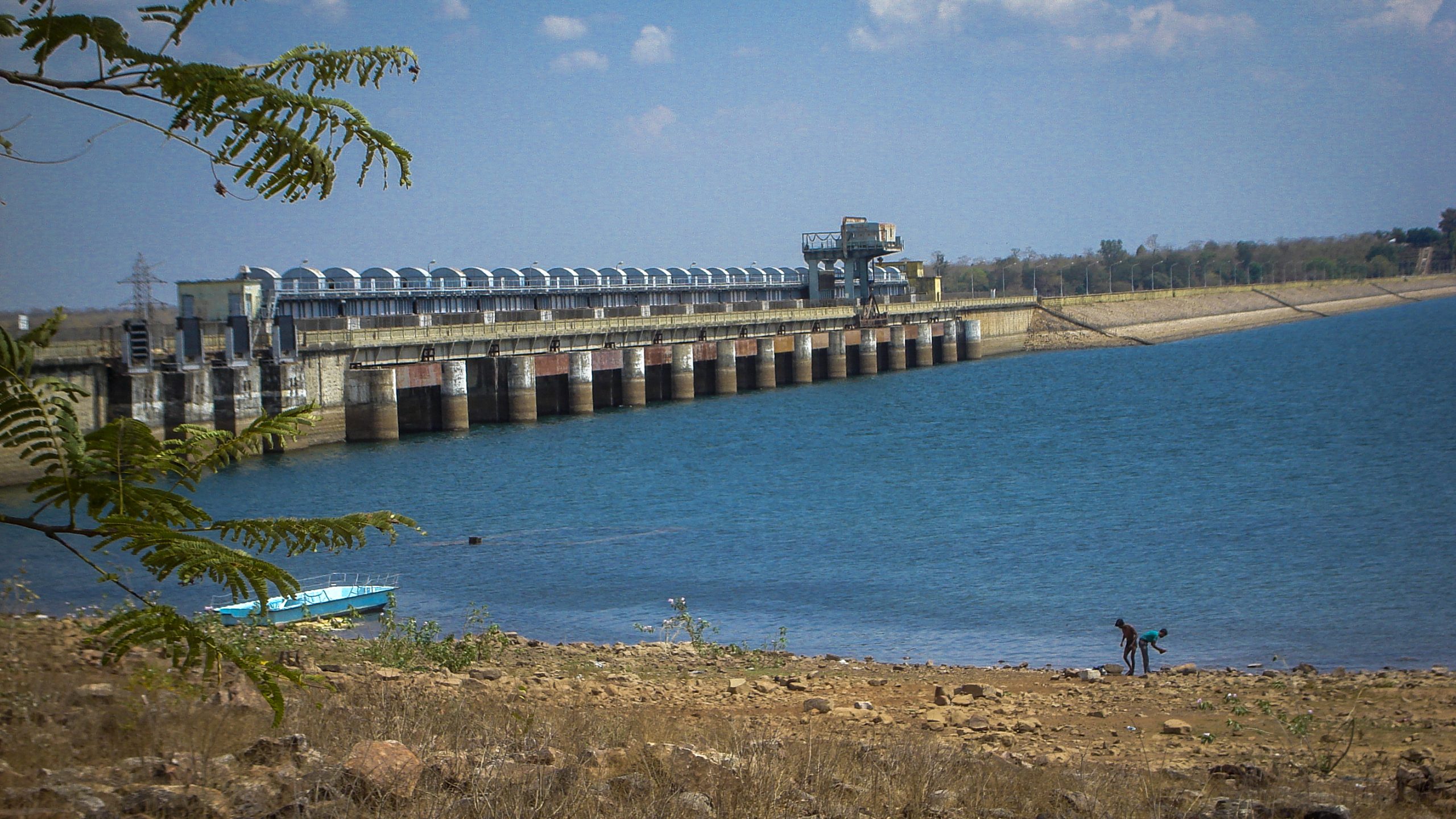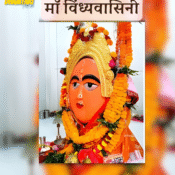
Top 10 Religious Places in Dhamtari
Top 10 Religious Places in Dhamtari District
1. Angar Moti Mandir – Near Gangrel Dam
A highly revered temple dedicated to Goddess Angar Moti. Situated on the banks of the Gangrel Reservoir, it is a major religious and picnic destination in Dhamtari. Special prayers are held on Fridays.The temple of Mata Angarmoti on the bank of Gangrel Dam is an ancient and religious place of great significance and a centre of power. Every year after Diwali, on the first Friday, a Bhavaya fair is organized in the temple premises. Thousands of devotees gather there. Since the temple is situated in the middle of the jungle, it is also referred to as Van Devi.
2. Rudreshwar Temple (Rudri) – Rudri Village
An ancient Shiva temple near the Mahanadi river. Believed to be built by King Rudra Dev, this site is associated with faith and mythology and becomes lively during Mahashivratri.
An ancient Shiva temple near the Mahanadi river. Believed to be built by King Rudra Dev, this site is associated with faith and mythology and becomes lively during Mahashivratri. The temple is believed to be one of the ancient Shiva temples of the Dakshin Kosala region. Devotees from across the state and neighboring areas visit this temple throughout the year, especially during Mahashivratri and the month of Sawan, to offer prayers and perform jalabhishek (water offering) to Lord Shiva. Worship at this temple is believed to fulfill wishes, remove obstacles, and provide inner peace and divine blessings.According to local legends, Rudri and the surrounding area were ancient seats of meditation for sages and saints. The temple holds immense importance in local culture and traditions. It is also considered a hub of Ashta Dharmik Manyataayein — the Eight Spiritual Beliefs associated with this temple.3. Bilai Mata Mandir – Dhamtari Town
A local temple of Goddess Durga (Vindhyavasini), especially popular during Navratri. Centrally located and frequently visited by locals for daily worship and religious events. In the heart of Dhamtari city, the sacred Bilai Mata Temple (also known as Vindhyavasini Mata Temple) is located. She is worshipped as the presiding deity of the city and holds deep historical and spiritual importance. According to legends, in ancient times this place was covered with dense forest. King Narhardeo was once passing through the forest when he noticed a group of cats (Billiya). When he tried to drive them away, they did not move, and even his horse could not go forward. That night, the King had a divine vision of the Goddess in his dream, where she instructed him not to remove them but to worship her at this very place.It is believed that the idol of the Goddess mysteriously appeared from the ground at this spot. Devotees strongly believe that whoever worships the Goddess with pure devotion will have their wishes fulfilled. During Chaitra Navratri and Sharadiya Navratri, the temple is beautifully decorated with flowers and lights. Special rituals such as the installation of Jyoti Kalash enhance the divine aura, leaving devotees mesmerized.Today, this mysterious temple of Bilai Mata is not only a place of worship but also a major center of faith and spirituality in Dhamtari.
4. Shringi Rishi Ashram (Sihawa Hill Region) – Near Sihawa
A tranquil ashram dedicated to the sage Shringi Rishi, surrounded by forest and streams. It’s said to be the origin of the holy Mahanadi river. Sihawa Parvat (also known as Mahendragiri Parvat) – Sringi Rishi Ashram. Sihawa Parvat, also called Mahendragiri Parvat, is home to the sacred ashram of Maharshi Sringi, which is associated with Lord Shri Ram from the Treta Yuga. According to ancient legends, Maharshi Sringi performed a yagya (sacrificial ritual) for King Dashrath to grant him progeny, during which Lord Shri Ram was born. It is also believed that Shanta Devi, the daughter of King Dashrath and sister of Shri Ram, was married to Maharshi Sringi.A notable legend mentions that when Sringi Rishi’s beloved disciple, Mahananda, accidentally dropped his kamandal (water pot) while meditating, a continuous stream of water started flowing from it. This stream was later named Mahanandi, after the disciple Mahananda, and continues to flow to this day.This site is both historical and religiously significant, attracting devotees with deep faith and reverence. Along with its spiritual importance, the natural beauty of Sihawa Parvat makes it a prominent tourism destination, combining faith, history, and scenic charm.5. Kumbhaj Rishi Ashram – Dongarpar Village, near Sihawa
Associated with sage Kumbhaj, this hilltop religious site includes idols of Ram, Sita, Lakshman, and ancient meditation spots. It’s ideal for quiet reflection and religious exploration.
Located in Dongapar village of Sihawa in Dhamtari district, the Kumbhaj (Agastya) Rishi Ashram is regarded as a sacred site of great religious and historical importance. It is believed that Maharshi Kumbhaj (Agastya) performed intense penance here, attained divine knowledge, and established Shree Jaleshwar Mahadev. According to ancient scriptures, Lord Shiva and Goddess Parvati themselves would visit this place to listen to the discourses of Rishi Kumbhaj (Agastya). A Blend of Natural Beauty, Tapovan, and Spirituality The ashram is blessed with dense green forests, holy streams, and a peaceful atmosphere. Every visitor who comes here experiences inner calmness, spiritual elevation, and a flow of positive energy. Tourism and Attractions Beyond its strong religious significance, the site is also a prominent destination for tourism and mental peace. Pilgrims and travelers alike come here to enjoy trekking, nature exploration, and a deeply spiritual journey. A Heritage of Chhattisgarh The Kumbhaj (Agastya) Rishi Ashram is not only a symbol of Dhamtari’s tourism identity but also an integral part of Chhattisgarh’s rich ancient and mythological religious heritage.6. Angira Rishi Ashram – Ghatula Village, Sihawa Block
This peaceful ashram is connected with Rishi Angira’s penance. There are deities of Lord Ram, Lakshman, and Sita and a naturally divine setting. This peaceful ashram is connected with Rishi Angira’s penance. There are deities of Lord Ram, Lakshman, and Sita and a naturally divine setting. According to the Puranas, Maharshi Angira is considered the Manas Putra (mind-born son) of Lord Brahma, and in virtues he is regarded equal to Brahma himself. Among the revered Saptarishis—such as Vashistha, Vishwamitra, and Marichi—Maharshi Angira is also counted with great honor. His divine spiritual wisdom, yogic power, penance, and mastery over mantras are highly acclaimed. It is said that his austerity and worship were so intense that his radiance and influence far surpassed that of fire itself. At that time, even Agni Deva was performing penance in the waters. Seeing that Angira’s spiritual power overshadowed his own, Agni felt saddened and approached the sage, saying: “You are the original Agni. Compared to your brilliance, I appear secondary, and now no one will call me Agni.” Out of respect, Maharshi Angira entrusted him with the divine duty of carrying offerings (Havis) to the gods, and also accepted Agni as his son. Thereafter, Agni himself became known as Brihaspati, the son of Angira. Maharshi Angira is revered as a seer of mantras, a yogi, saint, and great devotee. His Angira Smriti contains profound teachings and guidance on righteous living and dharma. Such a great and divine yogi’s ashram is located at Sihawa Parvat in Chhattisgarh, where he holds a highly important place among the Saptarishis. During the Ramayana era, it is believed that Lord Rama himself visited Rishi Angira at this sacred place. Mentions of this can also be found in the Ram Van Gaman region. Today, the site is not only a center of deep religious faith but also a significant destination for tourism in Chhattisgarh.
7. Ram Janki Mandir (Growing Hanuman Idol) – Dhamtari Town
Famous for the mystical belief that the Hanuman idol here increases in size each year. A place of deep local faith.
Famous for the mystical belief that the Hanuman idol here increases in size each year. A place of deep local faith. Located on Sadar Road in the heart of Dhamtari city, Shree Ram Janki Mandir is a historic temple with deep religious significance and spiritual traditions. Devotees who visit this sacred place believe that their wishes and prayers are fulfilled here. The installation of Hanuman Ji at this temple was done around 400 years ago, and at that time, the idol was in a smaller form. Over the years, the idol has gradually grown in size. Today, the Hanuman Ji idol stands in a majestic form with a height of 11 feet. According to the temple priests, special rituals, mantras, and ceremonies are performed to control the growth of the idol.Devotees are required to bow in reverence when offering prayers to Hanuman Ji. Due to its spiritual importance, the temple attracts a large number of devotees, especially during festivals and special occasions. Shree Ram Janki Mandir is considered one of the most important religious and tourist sites of Dhamtari, combining deep faith, cultural heritage, and a serene devotional atmosphere.
8. Sankat Mochan Hanuman Mandir – Dhamtari Town
A well-maintained and spiritually powerful temple, often visited on Tuesdays and Saturdays. Popular for personal prayers and community gatherings.
A well-maintained and spiritually powerful temple, often visited on Tuesdays and Saturdays. Popular for personal prayers and community gatherings. Located near Iitwari Bazar in the heart of Dhamtari city, this ancient Hanuman temple offers a devotional and serene atmosphere where devotees come to pray and fulfill their wishes. The temple houses a beautiful idol of Lord Hanuman, worshipped with great devotion by the local community. The temple is renowned for its antiquity and grandeur, making it a unique and significant site. Visitors not only perform rituals and prayers here but also experience peace and spiritual devotion. The majestic idol of Hanuman Ji and the impressive temple structure make it an important religious destination, attracting large crowds, especially on Tuesdays and Saturdays, which are considered special days dedicated to Lord Hanuman.The Hanuman temple in Dhamtari is a prominent religious center, symbolizing faith, devotion, and spiritual tranquility. It also plays a key role in Dhamtari tourism, drawing both pilgrims and visitors who wish to experience its religious and cultural significance.
9. Danteshwari Cave Temple – Near Sihawa
A sacred cave temple dedicated to Goddess Danteshwari, surrounded by natural beauty. Though less commercial, it’s spiritually significant. A sacred cave temple dedicated to Goddess Danteshwari, surrounded by natural beauty. Though less commercial, it’s spiritually significant.Amidst the dense forests of Sihawa Parvat, there are more than seven caves, including the famous Danteshwari Cave, which is dedicated to Goddess Danteshwari. The lush greenery and the melodious chirping of birds create a serene and soothing environment, offering peace to the depths of the heart.It is believed that in one of these caves, a lamp (diya) remains continuously lit, symbolizing divine presence. On the summit of Sihawa Parvat, the footprints of Lord Shri Ram are marked on a rock, serving as a revered symbol of faith and devotion.The combination of natural beauty, historical caves, and spiritual significance makes Sihawa Parvat an enchanting and prominent center for tourism. Its tranquil environment and divine heritage attract devotees, pilgrims, and nature enthusiasts alike, making it a must-visit destination in Chhattisgarh.
10. Karneshwar Temple – Near Sihawa
This ancient Shiva temple is part of the Sihawa spiritual belt. Locals believe it has strong mythological connections to the Mahabharata era. This ancient Shiva temple is part of the Sihawa spiritual belt. Locals believe it has strong mythological connections to the Mahabharata era. The Karneshwar Temple in Sihawa is a group of ancient temples dating back to the 12th century. Along with Lord Shiva, the complex also has temples dedicated to Lord Vishnu and the Goddess. Every year, during Maha Shivratri and Sawan Somwar, grand fairs and large gatherings of devotees are organized here. The temple’s architecture beautifully reflects the distinctive features of Dakshin Kosal. In addition, the site also preserves artworks related to the Ramayana and Mahabharata, which attract tourists from far and wide. It stands as a living example of the region’s glorious history.
🧭 All Locations Fall Under Dhamtari District
| Temple Name | Location | Type |
|---|---|---|
| Angar Moti Mandir | Gangrel area | Devi Temple |
| Rudreshwar Temple | Rudri | Shiva Temple |
| Bilai Mata Mandir | Dhamtari City | Durga Temple |
| Shringi Rishi Ashram | Sihawa Hills | Sage Ashram |
| Kumbhaj Rishi Ashram | Dongarpar (Sihawa) | Hill Temple/Ashram |
| Angira Rishi Ashram | Ghatula (Sihawa) | Ashram/Temple |
| Ram Janki Mandir | Dhamtari Town | Ram–Sita–Hanuman |
| Sankat Mochan Mandir | Dhamtari Town | Hanuman Temple |
| Danteshwari Cave Temple | Near Sihawa Forest | Devi Cave Temple |
| Karneshwar Temple | Sihawa Block | Shiva Temple |
All Categories
Recent Posts
Bilai Mata (Vindhyavasini Mata) Mysterious Temple in Dhamtari,Chhattisgarh
Dudhawa Dam Magic – Floating Café , Cool Breeze & Lake Views
Sondhur Dam — A place where nature resets your soul





